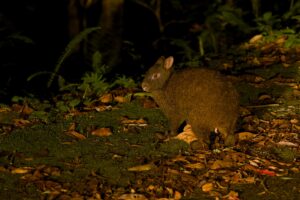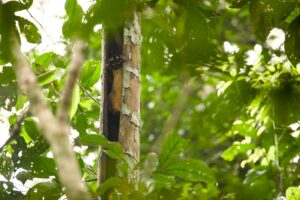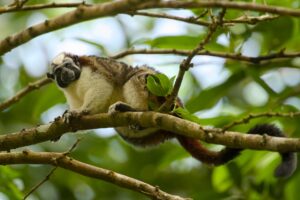What Is an Aye-aye? One of the World’s Rarest Primates
The aye-aye is often listed among the world’s 25 most endangered and unusual primates.
Although it is exclusive to Madagascar, tourist sites on the island offer easy sightings through feeding stations. Watching them eat coconut can be enjoyable for observing their behavior, but for photography—or for those seeking a truly wild encounter—it often feels lacking.
This article introduces a practical method for observing fully wild aye-ayes in their natural habitat.
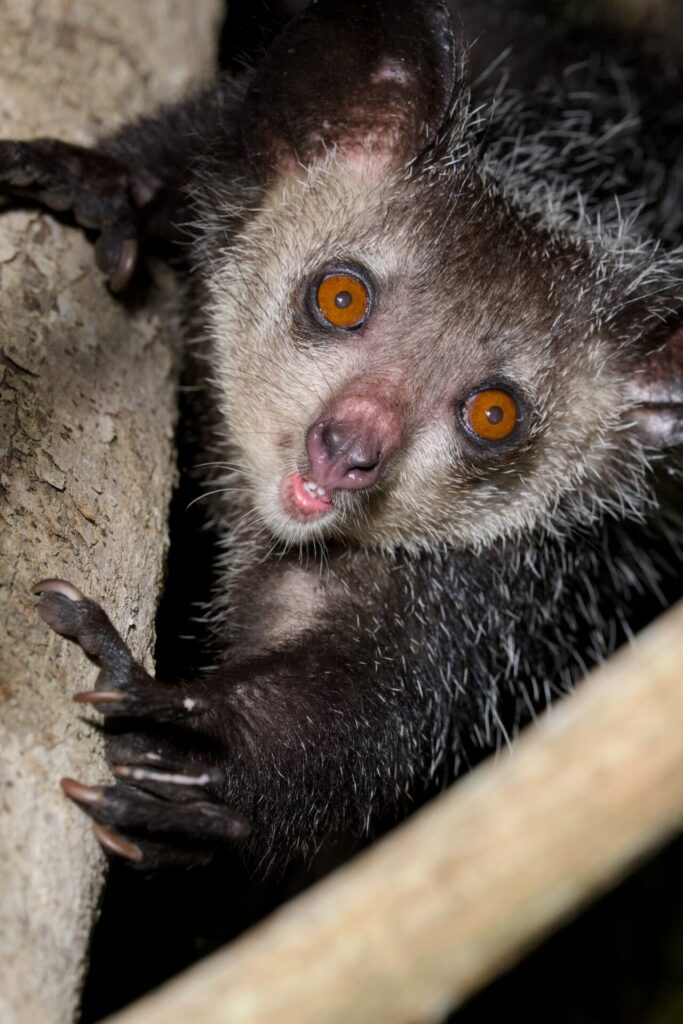
Feeding-site Encounters vs. True Wild Observations
Aye-ayes are nocturnal members of the lemur family, so all meaningful observations take place at night.
One of their most distinctive habits is building a day nest: they gather small branches and leaves to construct a spherical shelter high in the trees.
In some parts of Madagascar’s humid forest where a strong dry season occurs, the forest canopy becomes sparse just before the rainy season. Leaves fall away, and visibility inside the forest greatly improves.
This is the key moment.
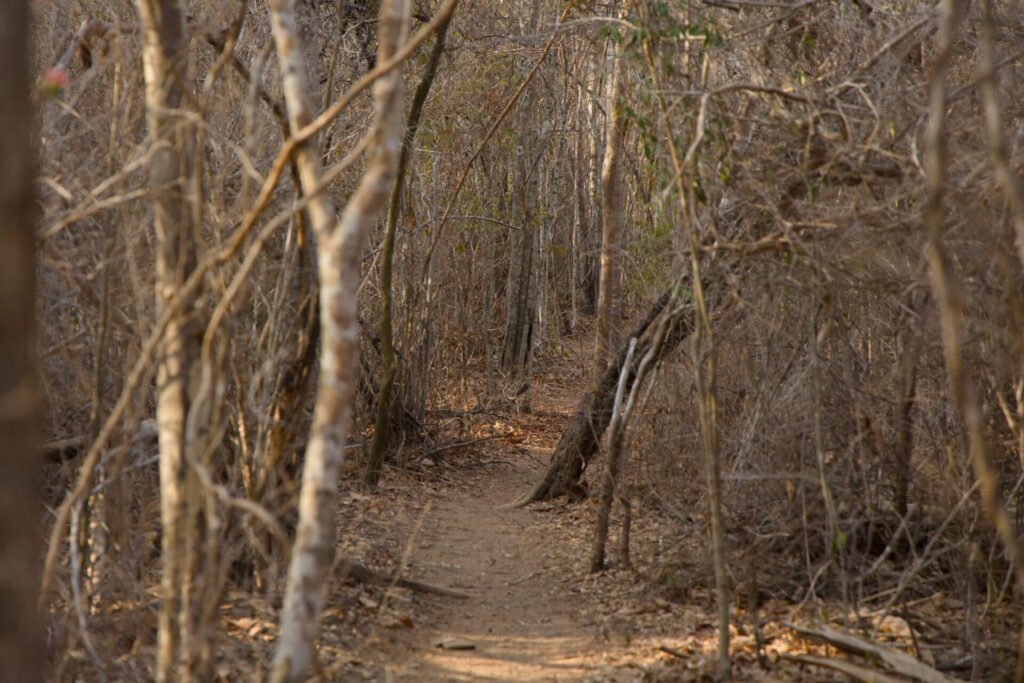


The Only Practical Way to Observe a Wild Aye-aye
The method is simple in theory but demanding in practice:
1. Search for day nests during the daytime.
Walk through the forest for hours and look for spherical leaf nests in the canopy.
2. Return at dusk and wait for the aye-aye to wake.
Every day, aye-ayes may change the location of their nests, so there is no guarantee you will find one.
But once you locate a nest, your chances of observing the animal rise dramatically.
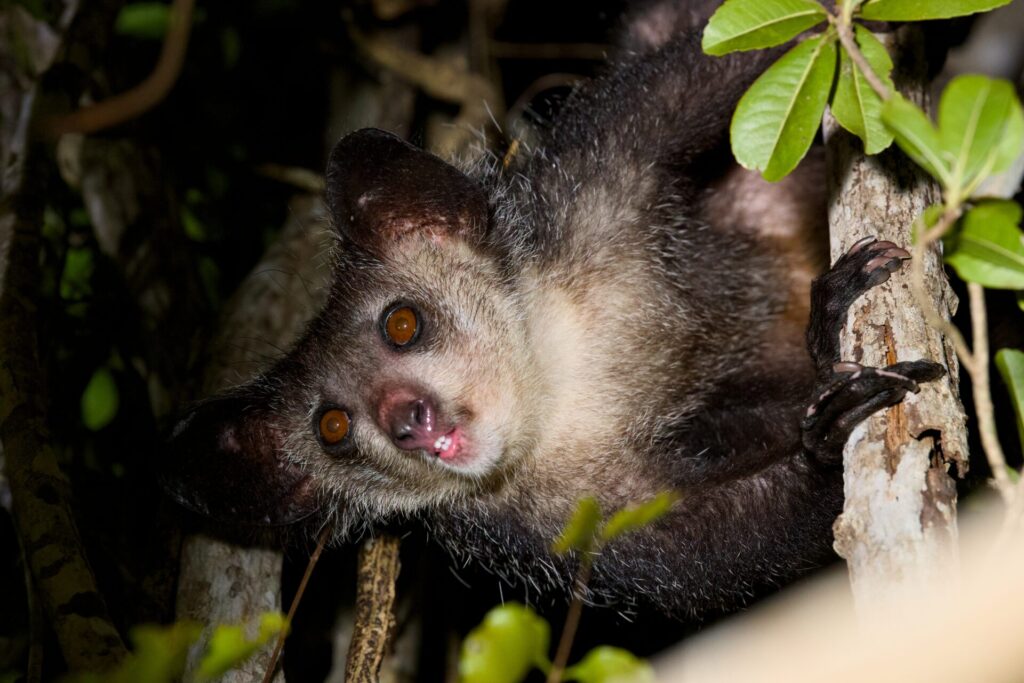
Two Successful Sightings: Field Notes from the Forest
During our recent expedition, we successfully observed aye-ayes waking from their nests on two separate occasions.
First Encounter
Late in the afternoon, after hours of searching, we finally found a nest. Exhausted but excited, we waited quietly as the light faded.
Just before sunset, we began to see a tail and parts of the body moving inside the nest. The anticipation was incredible.
Moments after dusk, the aye-aye slowly emerged—an unforgettable sight.
It moved about 50 meters away and began foraging, allowing us a calm and prolonged observation.
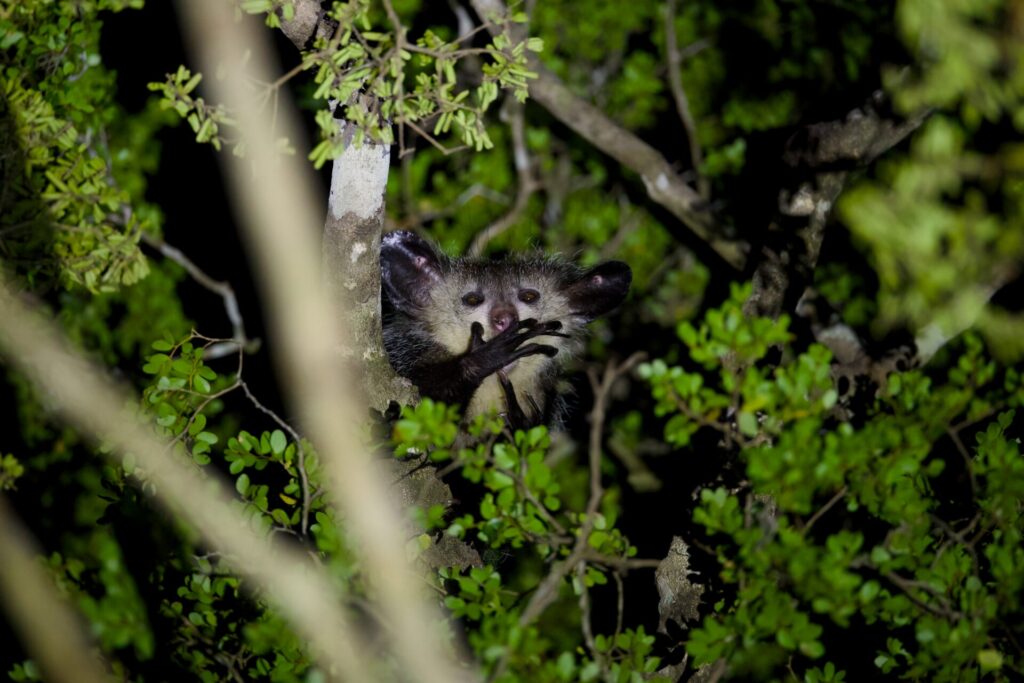
Second Encounter
The second sighting was even more dramatic.
Shortly after sunset, the aye-aye emerged almost immediately. Then, to my surprise, it climbed down to the ground and walked right past us—far too close for the telephoto lens I had ready—before disappearing into the forest.
These rare, intimate encounters are the reward for long hours of searching.
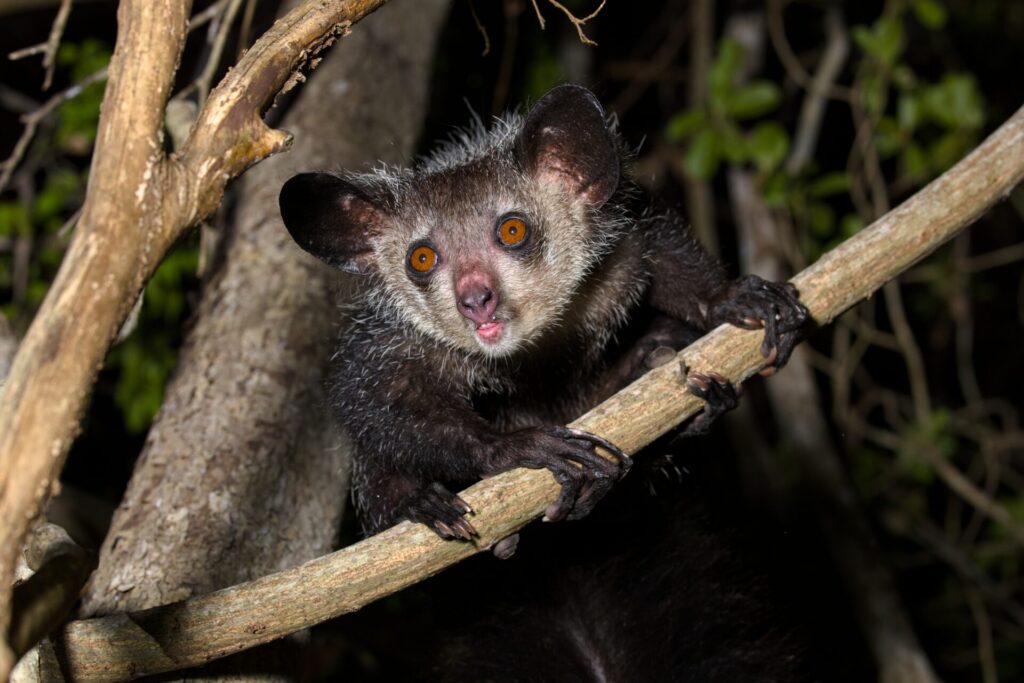
Unique Behaviors That Make Aye-ayes Fascinating
Watching an aye-aye in the wild reveals many behaviors rarely appreciated in feeding-site observations:
- Using elongated fingers and rodent-like incisors to extract insects from wood
- Listening carefully with their oversized ears for movement inside branches
- Balancing with an exceptionally long tail while moving smoothly through the canopy
Each behavior is distinct and unlike any other primate. Observing these traits in their natural habitat is both scientifically valuable and deeply captivating.
Join Our 2026 Field Expedition to Track Wild Aye-ayes
For those interested in experiencing this extraordinary adventure firsthand,
we are planning a fieldwork program featuring wild aye-aye trekking in 2026.
We look forward to welcoming you on this unforgettable journey into Madagascar’s nighttime forests.





